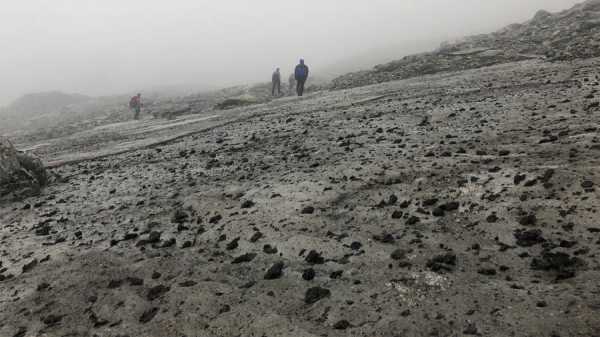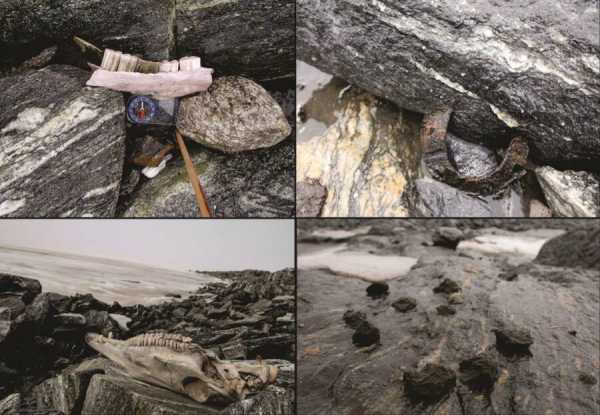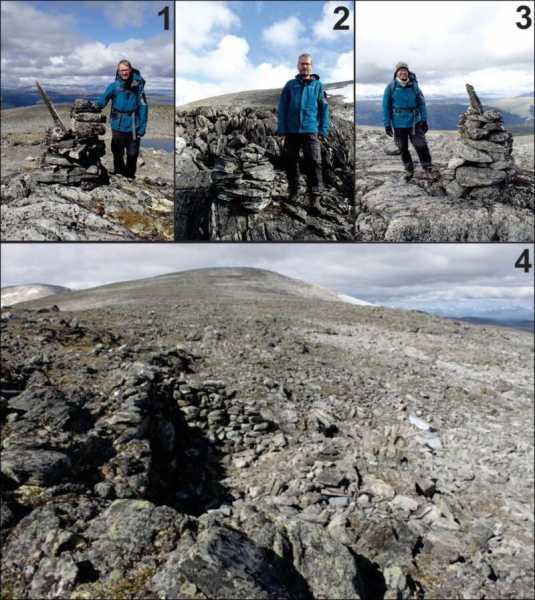
Espen Finstad/SecretsOfTheIce The Lendbreen glacier site after melting, revealing horse manure several centuries old.
The Lendbreen glacier massif in the Jotunheimen mountains of Norway is so remote that it can only be reached by professional cyclists or by helicopter.
However, a new study of ancient artefacts has revealed that the site was once a busy transport hub during the Viking Age.
According to the Smithsonian , the historic site is located approximately 320 km northwest of Oslo.
In the summer of 2011, archaeologists discovered centuries-old horse manure in the area. Warm weather also helped to reveal prehistoric objects, such as a 1,700-year-old tunic, that emerged from the melting ice.
Despite the sensational nature of the find – the oldest clothing ever found in Norway – the ice continued to melt. A new study in the journal Antiquity has documented all the discoveries made through this process: more than 1,000 additional artifacts.

Antiquity Journal: The finds included horseshoes, preserved horse dung, animal remains and Bronze Age arrows.
According to Science magazine, the objects collected date from 2011 to 2015 and span the time period from the Bronze Age (1750 BC) to 300 AD. The oldest items are related to hunting activities, including arrows believed to have been used to kill deer. Other finds include woolen items, leather shoes, and sled fragments.
Lars Holger Pilø, lead author of the study and co-director of the Innlandet County Glacier Archaeology Program, conducted radiocarbon dating on 60 sites. The results confirmed the active use of the transition from the Iron Age of the Roman Empire to the Middle Ages.
Although the Roman Empire did not extend into modern-day Norway, its influence was felt in northern Europe. Lendbreen differed from most glaciers used for hunting, serving as a transport and trade hub.
Merchants, shepherds and farmers crossed the 2,000 metre high Lomseggen ridge to summer pastures and trading posts. The site has produced more archaeological finds than any other glacial site in the region and perhaps the world.
“Uncovering an ancient mountain pass that is freeing itself from ice is a dream come true for glacial archaeologists,” Pilö said.
“The preservation of the artefacts recovered from the ice is astonishing,” said Espen Finstad, co-author of the study. “It looks as if they were recently lost, not centuries ago.”

Antiquity Journal Lars Pilø at the remains of a stone mound along the Lendbreen trail.
“The peak of use of the crossing was during the Viking Age around 1000 AD – a period of intense migration and trade in Scandinavia and Europe,” said James Barrett, an archaeologist at the University of Cambridge.
“This activity demonstrates how even remote areas were involved in economic and demographic processes,” he added.
Evidence has been discovered that a forgotten Viking trade route was used to transport reindeer antlers, butter and other goods to European markets.
“The Viking Age was characterized by the beginning of globalization: raw materials were brought in from all over the world,” explained Søren Michael Sindbæk of Aarhus University. “Lendbreen has provided chronologically precise data illustrating this process.”
Pilö noted that the route contained remains of a shelter, and the lack of finds in other passes confirms the special significance of Lendbreen. According to scientists, the route was used to move from lowland farms to highland summer pastures.
“The preservation of organic materials makes this pass unique compared to ordinary mountain trails, where only metal objects remain,” he emphasized.

Antiquity Journal. Aerial photography of the Lendbreen glacier massif with signs indicating excavation areas.
“This is one of the first studies in glacial archaeology to examine the role of mountain passes in the history of travel over many centuries,” said William Taylor of the University of Colorado Museum of Natural History.
“It is striking to see direct evidence of the formation of mountain routes through material evidence: horse droppings, animal bones and objects left behind by travellers.”
An alarming fact was the sharp decline in the number of finds after 1400 AD, coinciding with the Plague epidemic in Norway and the beginning of the Little Ice Age from 1300 AD.
“Subsequent pandemics have worsened the situation, affecting local communities and economies, reducing both long-distance transport and travel to summer farms,” Pilö explained.
The survey, which covers an area the size of 35 football pitches and is the largest ever undertaken in glacial archaeology, has been put on hold due to the COVID-19 pandemic.
Let's hope that the unique scientific work will resume soon.
After learning about an ancient Viking mountain pass, read about a 1,200-year-old sword found in the Norwegian mountains, or an 11th-century Viking Age “meadow hall” discovered in Scotland.
Sourse: www.allthatsinteresting.com





